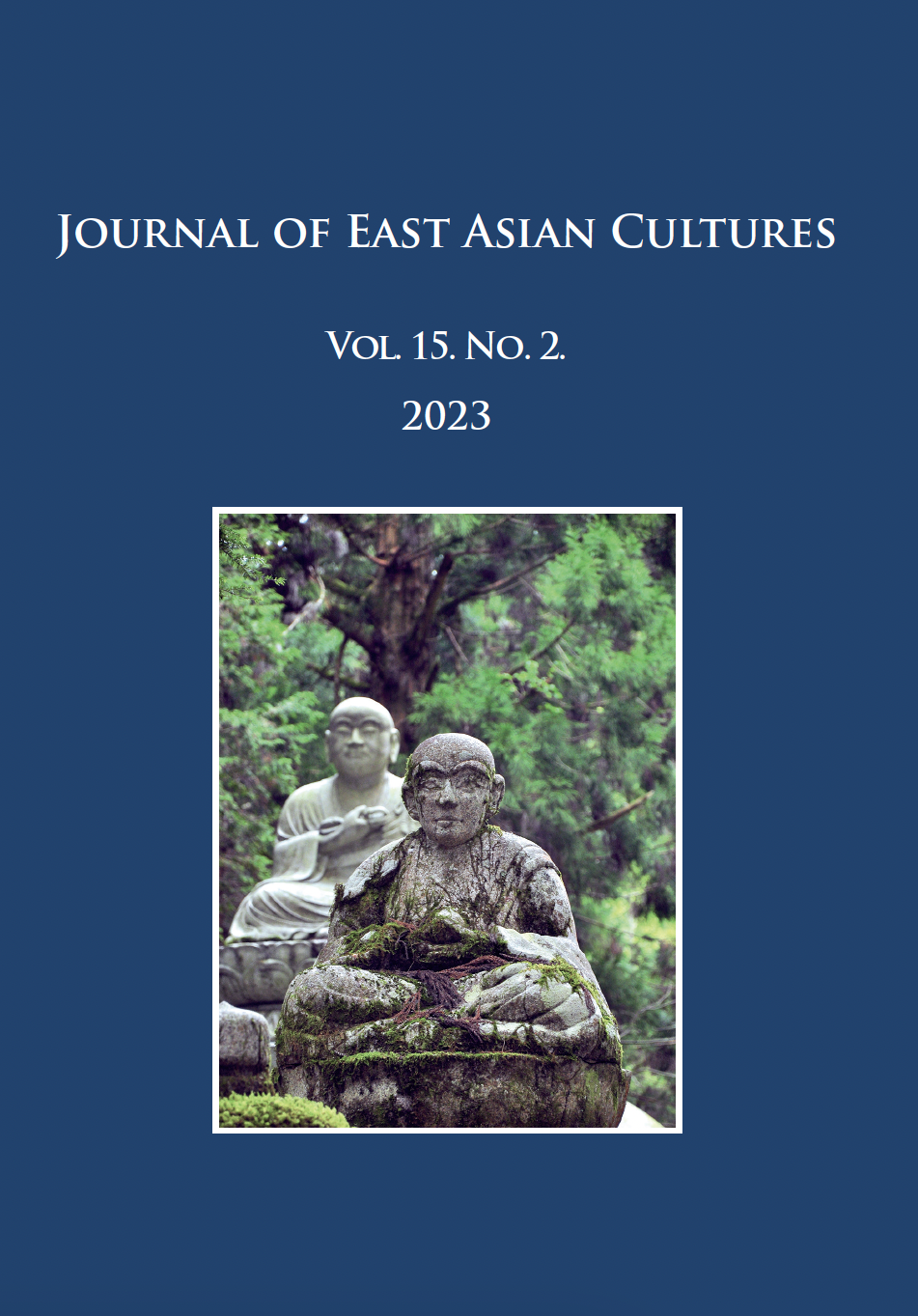Megjelent 2023-09-30
Kulcsszavak
- gyakorlat,
- jiri 自利,
- rita 利他,
- mahájána buddhizmus,
- jelenkori Japán
- 2011-es kelet-japáni földrengés ...Tovább
Hogyan kell idézni

This work is licensed under a Creative Commons Attribution-NonCommercial 4.0 International License.
Absztrakt
When discussing Buddhism in practice, we should first note that the word practice has a multilayered meaning in Buddhism. For the purposes of this paper, I would like to simplify things considerably, and divide those multiple meanings into two groups. The first involves the training of one’s mind and body. By engaging in such training, the practitioner is said to draw closer to Buddhist enlightenment. This practice takes various forms depending on the time and place, such as observing the precepts or engaging in meditation, and is referred to as ‘benefiting the self’ (jiri 自利). Second, there is the practice that consists of Buddhists’ activities vis-à-vis society. Even Buddhists, whose fundamental orientation is towards leaving the secular world (shusseken 出世間), have engaged in activities in society that have taken a variety of forms. There are records of Śākyamuni having given various pieces of advice to rulers during ancient times. We also find many records of later Buddhists engaging in missionary and charitable activities. This is referred to as ‘benefiting others’ (rita 利他). In particular, Mahayana Buddhism emphasizes the inseparability of ‘benefiting the self’ and ‘benefiting others.’
Although Buddhist practice is traditionally divided into two categories: self-interest and altruism, it would not be true to say, in fact, that "benefiting others" has always been as much of a primary concern as "benefiting the self." Rather, it can be said that concern for others has always been a weakness of Buddhism, overshadowed by concerns with ‘benefiting the self.’ Thus, Mahayana Buddhism's emphasis on the importance of benefiting others, on the contrary, could be said to imply that this was a weakness of the Buddhism at the time of the Mahayana arose.
My paper focuses on recent developments surrounding Buddhism and its practice in contemporary Japan, particularly the element of ‘benefiting others.’ The question of how Buddhists should contribute to society has continually and repeatedly appeared from the origins of Mahayana Buddhism to the present. Against this backdrop, an event occurred in Japan in recent years that marked a major turning point in the issue of Buddhist contributions to society. That event is the Great East Japan Earthquake of 2011. In this paper, I consider the issue of ‘benefiting others’ in Buddhism in light of the effects of the tragic earthquake disaster.
Hivatkozások
- Daihan nehankyō (Nanpon) 大般涅槃経 (南本) [Mahāparinirvāṇa-sūtra] 2008. In: Isoda Hi-rofumi 磯田熙文 – Tsukamoto, Keishō 塚本啓祥 (eds.) Shin kokuyaku daizōkyō 新国訳大蔵経 6–1. Tokyo: Daizō Shuppan.
- ‘Dai jūrokkai gakujutsu taikai kiji 第十六回学術大会記事,’ Indogaku bukkyōgaku kenkyū 印度學佛教學研究 14.1 (1965).
- Hirakawa Akira 平川彰 1970. ‘Bukkyō kyōdan to shakai to no kakawariai 仏教教団と社会とのかかわりあい [The Relationship between the Buddhist Religious Organisations and Society],’ Nihon Bukkyō Gakkai nenpō 日本仏教学会年報 35: 1–16.
- Horner, I. B. (trans.) 2015. The Book of Discipline (Vinaya Pitaka). Vol. 4. Palala Press.
- Nihon Bukkyō Gakkai (ed.) 1970. Bukkyō to shakai no shomondai 仏教と社会の諸問題 [The Many Problems of Buddhism and Society]. Heirakuji Shoten.
- Nishi Yoshio 西義雄 1966. ‘Ōyō bukkyōgaku no kiso to sono bunya 応用仏教学の基盤とその分野 [The Foundations and Fields of Studies of Applied Buddhist Studies],’ In-dogaku bukkyōgaku kenkyū 印度学仏教学研究 15.2: 602–613. https://doi.org/10.4259/ibk.15.602
- Norman, K. R. 2001. The Group of Discourses (Sutta-Nipāta). Second Edition. Oxford: The Pali Text Society.
- Sasaki Shizuka 佐々木閑 2014. ‘Sesshon no. 8 no happyō ni taisuru komento: Okamoto Kenshin shi, Furukawa Yōhei shi, Minoura Gyōyū shi no happyō ni tsuite セッションNo.8の発表に対するコメント: 岡本健資氏、古川洋平氏、箕浦暁雄氏の発表について [Comments on the Session No. 8 Presentation: About the Presentations of Okamoto Kenshin, Furukawa Yōhei, and Minoura Gyōyū],’ Nihon Bukkyō Gakkai nenpō 日本仏教学会年報 80: 193–198.
- Shimoda Masahiro 下田正弘 2011. ‘Kyōten wo sōshutsu suru: Daijō sekai no shutsugen 経典を創出する—大乗世界の出現 [Creating the Buddhist Texts: The Appearance of the Mahāyāna World].’ In: Katsura Shōryū 桂紹隆 – Shimoda Masahiro et al. (eds.) Shirii-zu daijō bukkyō 2 Daijō bukkyō no tanjō シリーズ大乗仏教 2 大乗仏教の誕生 [Mahāyāna Buddhism Series Volume 2: The Birth of Mahāyāna Buddhism]. Tokyo: Shunjūsha, 37–71.
- Watson Burlingame, Eugene 2018. Buddhist Legends: Translated from the Original Pali Text of the Dhammapada Commentary; Introduction, Synopsis; Translation of Books 1 and 2, With a Photogravure of a Palm-Leaf Manuscript. London: Forgotten Books.

